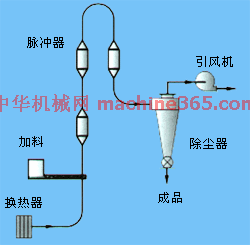1) pulse cooling


脉冲冷却
1.
This paper introduces principles, characters and practic al or possible applications of pulse cooling, conformal cooling and CO_ 2 gas cooling of injention molding .
介绍了脉冲冷却、随形冷却、CO2气体冷却等注塑模新型冷却技术的概念和研究现状。
2) Impingement cooling


冲击冷却
1.
Numerical Simulation of Micro-jet Array Impingement Cooling;


微射流矩阵冲击冷却数值模拟
2.
Numerically simulating mist/steam impingement cooling with phase change


水雾/蒸汽相变冲击冷却的数值模拟
3.
Convective heat transfer characteristics of impingement cooling for a self-excited precessing jet
自激励旋进射流冲击冷却的对流换热特性
3) impinging cooling


冲击冷却
1.
With respect to impinging cooling,the distribution of average and stagnant Nusselt number impinging on plane,Convex and concave surface is investigated.
本文概括总结了近年涡轮叶片冷却数值模拟的研究成果:对通道内部对流,总结了哥氏力和浮升力对Nu数和温度分布规律的影响;对于气膜冷却,总结了不同紊流模型情况下,叶片表面的Nu数分布以及各种紊流模型在模拟流动和换热方面的优劣;对于冲击冷却,总结了冲击各种表面情况下,滞止和平均Nu数分布规律和冷却效率对冲击距离设计的影响。
2.
The front of testturbine blades has three cooling madels, they are radial smooth passages, impinging coolingon lending edge and full impinging cooling in all blade front part, respectively.
叶片前部分别采用径向光滑通道、集中冲击冷却和分散冲击冷却三种结构,叶片后部则分别采用三排φ3扰流柱和五排φ2扰流柱稠密布置两种结构。
4) jet impingement


冲击冷却
1.
Three-dimensional numerical study is conducted to investigate the heat transfer characteristics for jet impingement cooling configurations.
采用数值模拟方法对冲击冷却的流动和传热过程进行了三维数值研究。
2.
Publications show that rotation influences the jet impingement cooling efficiency, and this paper focuses on the effects of rotation on jet impingement cooling.
射流冲击冷却技术具有结构简单以及局部换热效果显著等特点,在食品业,钢铁退火,玻璃回火特别是航空发动机涡轮叶片冷却领域得到广泛应用。
5) plunger,cooling


冲头冷却
6) cooling flush amount


冷却冲洗量
1.
Logical cooling flush amount enables pump mechanical seals to be reliable and has long service life.
合理的冷却冲洗量能使泵机械密封运行更可靠、寿命更长,文中给出的冷却冲洗量估算方法适用于实际应用场合。
补充资料:GQDM系列单级脉冲干燥机
 单级脉冲气流干燥机: 适用于各类含表面水份的粉粒状、松散结晶物料干燥脱水,采用先进的脉冲强化换热结构,通过改变物料与热介质之间的相对速度,有效地强化热质交换过程。 特点: 1.干燥时间短、脱水速度快、一般在0.5-3秒。热效率高、且产品不产生过热现象。自动化程度高、干燥产品质量好。 2.干燥强度大、脱水能力可从25 kgH2O/h至2000 kgH2O/h。 3.设备简单、占地面积小、投资省,GQW型为专用低高度紧凑型。 4.应用范围广,可适用于各种粉粒状、膏糊、滤饼类物料。 5.可根据用户情况及物料耐热温度选择蒸汽、电、热风炉、烟气炉、锅炉烟气余热等作为热源。热介质的温度可以从120℃至780℃之间选择。 选型表:
|
说明:补充资料仅用于学习参考,请勿用于其它任何用途。
参考词条